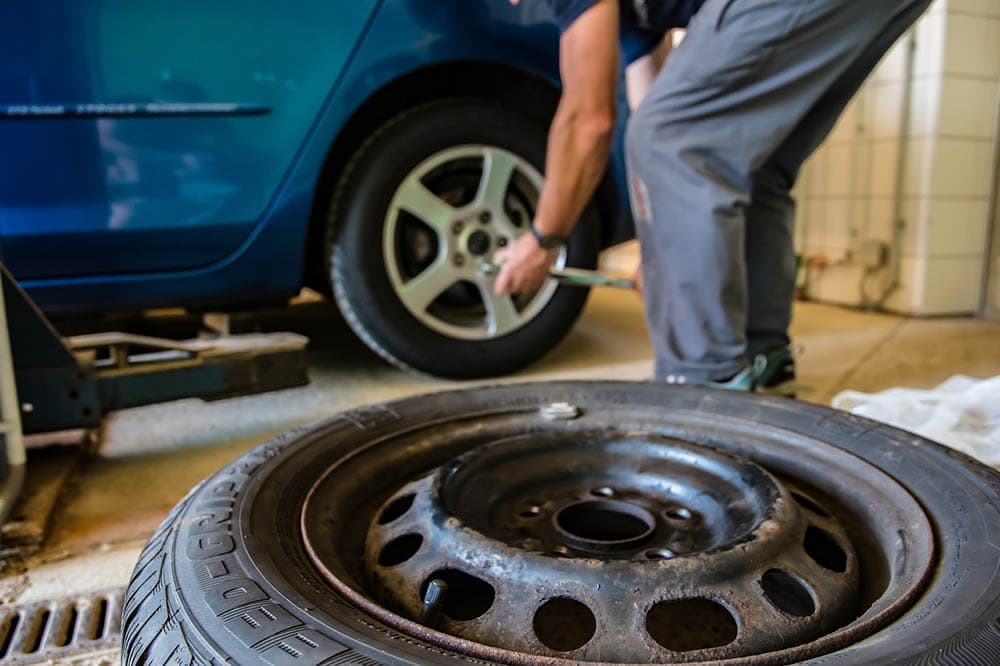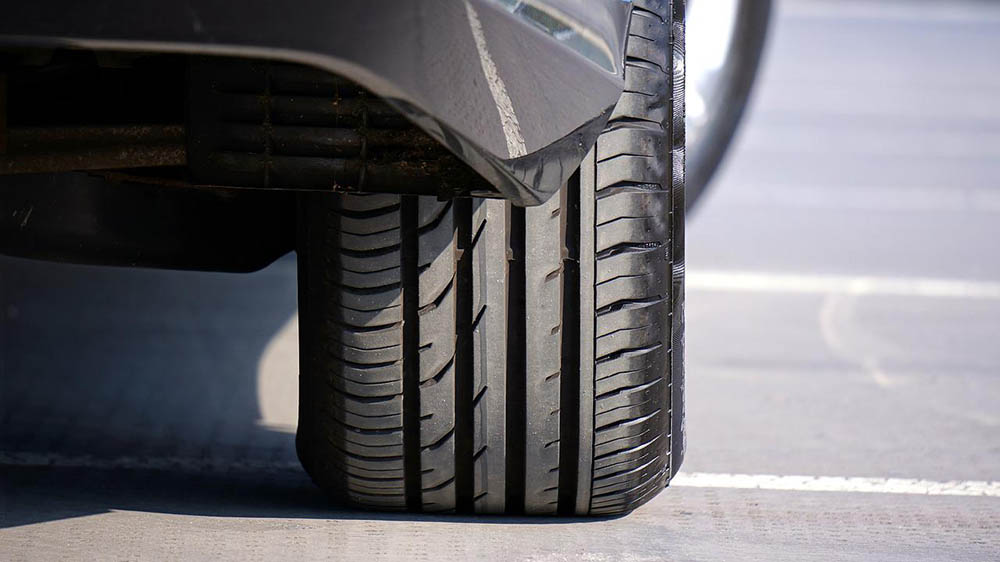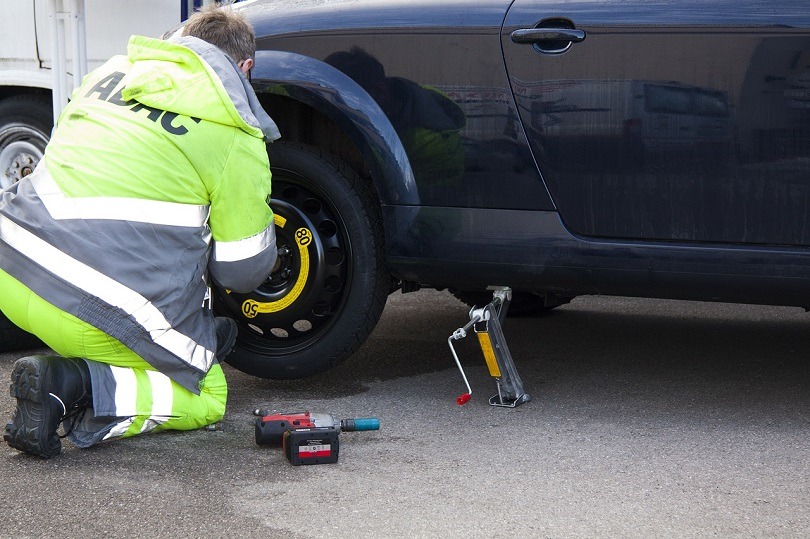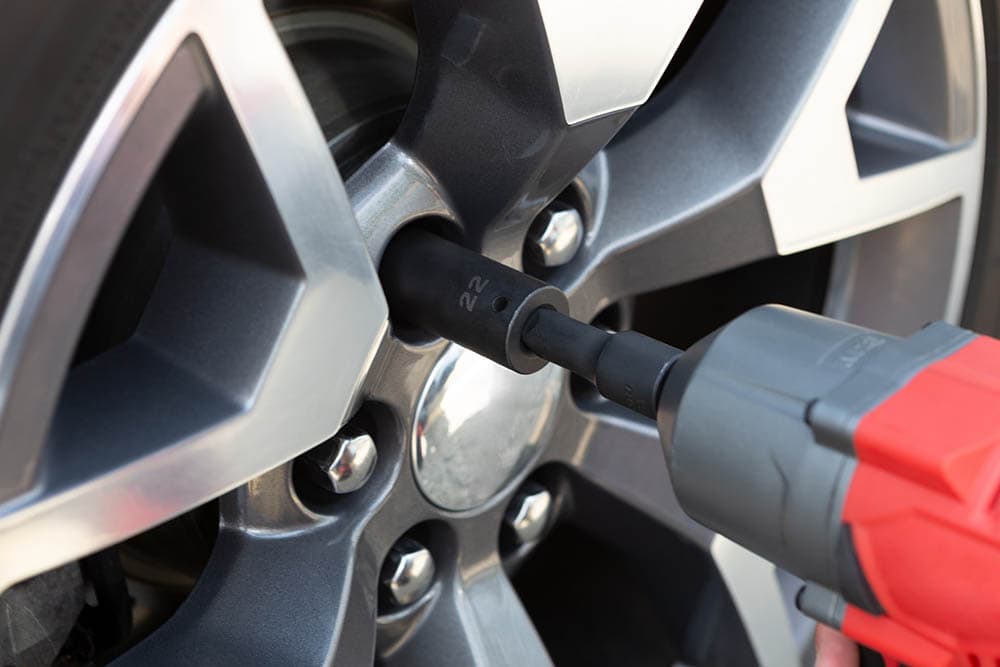What is a Tire Rotation? Reasons, Types, & FAQ
-
Pete Ortiz
- Last updated:

It is one of those regular things you are supposed to do among the laundry list of items that is the suggested car maintenance calendar:
- Check your fluids every month.
- Change the oil every 3,000 miles.
- Change your brake pads every year.
- Rotate your tires.
But is it really necessary? And what does it do anyway besides take up another trip to the shop?
A tire rotation is where you change the position of the tires on your car in specific patterns. Doing this keeps the wear on your treads even and maximizes the lifespan of the tires. Additionally, having consistent tread depth is important for handling, which keeps the drive safer for you. Read on to learn more.
How Does it Work?

The tread on your tires wears down as you drive, but it doesn’t all wear evenly. The front tires tend to wear faster than the rear as they absorb more of the force from things like braking and cornering. The wear is also uneven within the tire itself—the insides of the tires tend to wear down faster than the outsides. A tire rotation changes the position of the tires—front to back and side to side—thus evening out the tread wear to a consistent level across all tires, inside and out. A rotation is also a good time to check the overall condition of your tires—the state of the treads, if there are any leaks, inspect your brakes, etc.
What are the Different Types of Rotation?
There are five different rotation patterns. Which you use depends on several factors: whether the car is front, rear, all, or 4-wheel drive; whether the tires are the same size front to back; the type of tire; whether they are directional or not; or whether you have a full-sized spare to add to the rotation.
X-Pattern
This name is self-explanatory; the tires are rotated in the shape of an x. The front tires go to the rear, vice versa, and the driver’s side tires go to the passenger’s side and vice versa—everything moves diagonally. This pattern is used on some front-wheel drive vehicles like sedans or light trucks when the tires are non-directional and of uniform size. (Directional tires are a specialty tire that can only rotate in a certain direction—they must be mounted on the wheel facing a particular side. The average tire is non-directional and can be positioned facing either way.)

Rearward Cross
The rear tires are moved to the front but kept on the same side, whereas the front tires are transferred to the rear and switch sides—the front tires move back diagonally, but the rear tires move straight forward. This is used for rear-wheel, 4-wheel, or all-wheel-drive vehicles, again, when the tires are uniform size and non-directional. It’s also used to rotate in a full-sized spare tire. The tire that began as the driver’s front tire becomes the spare, and the current spare is placed on the passenger rear axle.
Forward Cross
The opposite of the rearward cross, the front tires are moved back but kept on the same side, and the rear tires are moved forward and switch—the rears move forward diagonally, and the fronts move straight back. This pattern is suggested for most front-wheel drive vehicles when the tires are uniform size and non-directional. To rotate in a full-sized spare, the current spare is placed on the passenger rear axle, and what began as the passenger front tire becomes the new spare.

Side-to-Side
This is used only when the tires on the front and rear axles are of different sizes. The tires switch sides but do not switch axles. The fronts stay up front, and the rears remain in the back, but they all do a left-and-right switch.
Front-to-Rear
This is used when the tires are of uniform size, but they’re directional tires. They stay on the same sides but change positions forward and backward. The rear driver becomes the front driver, vice versa, and the rear passenger becomes the front passenger and vice versa.
Why It’s Important
A few millimeters here and there of difference may not seem like a lot, but when we’re talking about the forces involved in driving and braking at highway speeds, those minute differences add up quickly and have a significant impact on your vehicle.
Uneven tread wear affects traction, reducing handling and increasing the risk of accidents, especially when going around a corner or braking. These are aspects of driving that are already the most dangerous and accident-prone, so adding more preventable risk is not a good idea.
On an all-wheel or 4-wheel drive vehicle, the uneven wear can also put extra strain on the drivetrain—a part of the vehicle filled with sensitive and expensive parts. The added stress increases the likelihood of one of these components breaking, leading to a costly repair bill that could’ve been easily avoided.

Extend the Lifespan of Your Tires
The most obvious detriment of not rotating your tires, however, is that it will shorten the lifespan of your tires. If you never rotate them, the pair experiencing the most wear will go bald and need to be replaced faster than the other one. Now, you may not want to hear this, but because of all the safety and maintenance concerns from uneven wear that we’ve already discussed, you really should replace all your tires simultaneously rather than in pairs. In fact, many tire shops require this unless the tread depth of one pair is very good. So, by not rotating your tires, you’ll have to replace a pair of perfectly good tires just because another pair was more worn down. However, if you do regular rotations, you’ll spread the stress more evenly and increase their lifespans.
Frequently Asked Questions (FAQ)
How Often Should I Rotate My Tires?
Tire rotation is a regular maintenance item. Ideally, you should consult your car’s manufacturer on their suggested rotation schedule, but a good rule of thumb is to do a rotation every time you get an oil change. If, however, you’re using higher-end oil that doesn’t need to be changed as often, go for a rotation every six months.
Do I Need to Get an Alignment as Well?
This is one area where shops will try to upsell you that you don’t need. An alignment is a much more expensive and less regularly necessary procedure than a rotation. You only need an alignment once every year or two, not every time you go in for a rotation.
Conclusion
Getting your tires rotated is a vital component of regular car maintenance. It maximizes the lifespans of your tires while minimizing undue safety risks and maintenance costs. The best part is, it’s an easy enough procedure to do on your own, assuming you have all the right tools. But even if you don’t, it’s still relatively inexpensive to get a shop to do it.
Featured Image Credit: HutchRock, Pixabay
Contents


